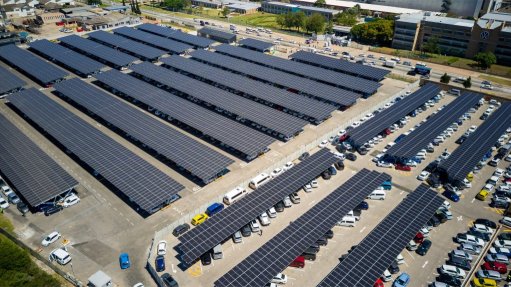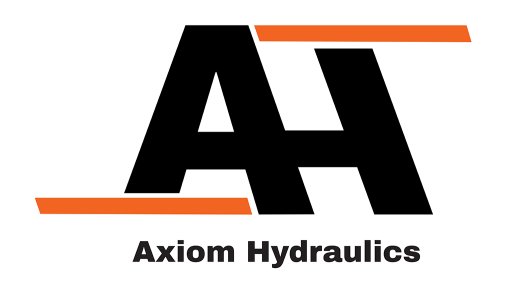Policy support gap hindering low-emissions hydrogen uptake – IEA
While there continues to be a high level of interest in new hydrogen projects, the current challenging economic climate means that a timely and well-structured rollout of policy support is needed for the successful realisation of these investments, says the International Energy Agency (IEA).
The IEA elaborates that momentum in favour of low-emissions hydrogen remains strong, even in the face of delayed financial incentives and persistent cost pressures that pose potential project delays. It notes that production levels can still increase substantially by 2030 if all announced projects are realised.
The IEA emphasises the importance of proactive measures by countries to encourage hydrogen uptake. Despite more than 40 countries globally unveiling national hydrogen strategies, the actual capacity and production volumes remain limited. This is mainly owing to developers awaiting government support before committing to investments. As such, low-emissions hydrogen accounts for less than 1% of overall hydrogen production and use.
This while inflation remains relatively high and supply chains disrupted, which threatens long-term profitability. IEA explains inflation and more expensive borrowing costs are affecting the entire hydrogen value chain, driving up financing costs for developers and reducing the impact of government support.
This confluence of factors is particularly detrimental for an industry that faces high upfront costs related to equipment manufacturing, construction and installation.
Nonetheless, electrolyser capacity for hydrogen production reached almost 700 MW by the end of 2022.
Based on projects that have reached final investment decision or are under construction, total capacity could more than triple to 2 GW by the end of 2023, with China accounting for half of this.
If all announced projects are realised, a total of 420 GW could be achieved by 2030, an increase of 75% compared to the IEA’s Global Hydrogen Review 2022.
IEA notes low-emissions hydrogen plays a key role in decarbonising energy-intensive sectors such as chemicals, refining and steel, but a challenging economic environment will now test the resolve of hydrogen developers and policymakers to follow through on planned projects.
IEA executive director Fatih Birol reiterates that greater progress is needed on technology, regulation and demand creation to ensure low-emissions hydrogen can realise its full potential.
Beyond the challenges facing manufacturers and developers, IEA’s Global Hydrogen Review 2023 also finds that efforts to stimulate demand for low-emissions hydrogen are lagging behind what is needed to meet climate ambitions.
Hydrogen use globally reached 95-million tonnes in 2022, which marks an increase of nearly 3% compared with the previous year.
IEA explains there was strong demand growth in all major consuming regions except Europe, which suffered a hit to industrial activity owing to the sharp increase in natural gas prices. However, uptake of low-emissions hydrogen remains very limited, accounting for only 0.6% of total hydrogen demand.
As a result, hydrogen production and use in 2022 released 90-million tonnes of carbon dioxide emissions to the atmosphere.
The report further outlines how low-emissions hydrogen can be an opportunity for countries to boost their economies for the future by creating new industrial supply chains.
Government funding programmes are already available through schemes such as the US Clean Hydrogen Production Tax Credit, the European Union’s Important Projects of Common European Interest, and the UK Low Carbon Hydrogen Business Model. However, the lengthy time lags between policy announcements and implementation are causing developers to delay projects.
IEA says yearly production of low-emissions hydrogen could reach 38-million tonnes a year in 2030, if all announced projects are realised, with almost three-quarters of it coming from electrolysers running on renewable energy and the remainder using fossil fuels with carbon capture, utilisation and storage.
The lack of attention to hydrogen demand creation is illustrated in existing country commitments. The sum of all government targets for low-emissions hydrogen production accounts for up to 35-million tonnes today, but targets for creating demand account for just 14-million tonnes, only half of which is focused on existing hydrogen uses.
Direct purchase agreements with private sector consumers are beginning to emerge but remain at a very small scale.
The report suggests several steps for governments to reduce risk and improve the economic feasibility of low-emissions hydrogen such as effective delivery of support schemes, bolder action to stimulate demand, and addressing market barriers such as licensing and permitting.
Moreover, establishing international markets in hydrogen requires cooperation to develop common standards, regulations and certifications.
Article Enquiry
Email Article
Save Article
Feedback
To advertise email advertising@creamermedia.co.za or click here
Comments
Press Office
Announcements
What's On
Subscribe to improve your user experience...
Option 1 (equivalent of R125 a month):
Receive a weekly copy of Creamer Media's Engineering News & Mining Weekly magazine
(print copy for those in South Africa and e-magazine for those outside of South Africa)
Receive daily email newsletters
Access to full search results
Access archive of magazine back copies
Access to Projects in Progress
Access to ONE Research Report of your choice in PDF format
Option 2 (equivalent of R375 a month):
All benefits from Option 1
PLUS
Access to Creamer Media's Research Channel Africa for ALL Research Reports, in PDF format, on various industrial and mining sectors
including Electricity; Water; Energy Transition; Hydrogen; Roads, Rail and Ports; Coal; Gold; Platinum; Battery Metals; etc.
Already a subscriber?
Forgotten your password?
Receive weekly copy of Creamer Media's Engineering News & Mining Weekly magazine (print copy for those in South Africa and e-magazine for those outside of South Africa)
➕
Recieve daily email newsletters
➕
Access to full search results
➕
Access archive of magazine back copies
➕
Access to Projects in Progress
➕
Access to ONE Research Report of your choice in PDF format
RESEARCH CHANNEL AFRICA
R4500 (equivalent of R375 a month)
SUBSCRIBEAll benefits from Option 1
➕
Access to Creamer Media's Research Channel Africa for ALL Research Reports on various industrial and mining sectors, in PDF format, including on:
Electricity
➕
Water
➕
Energy Transition
➕
Hydrogen
➕
Roads, Rail and Ports
➕
Coal
➕
Gold
➕
Platinum
➕
Battery Metals
➕
etc.
Receive all benefits from Option 1 or Option 2 delivered to numerous people at your company
➕
Multiple User names and Passwords for simultaneous log-ins
➕
Intranet integration access to all in your organisation





















